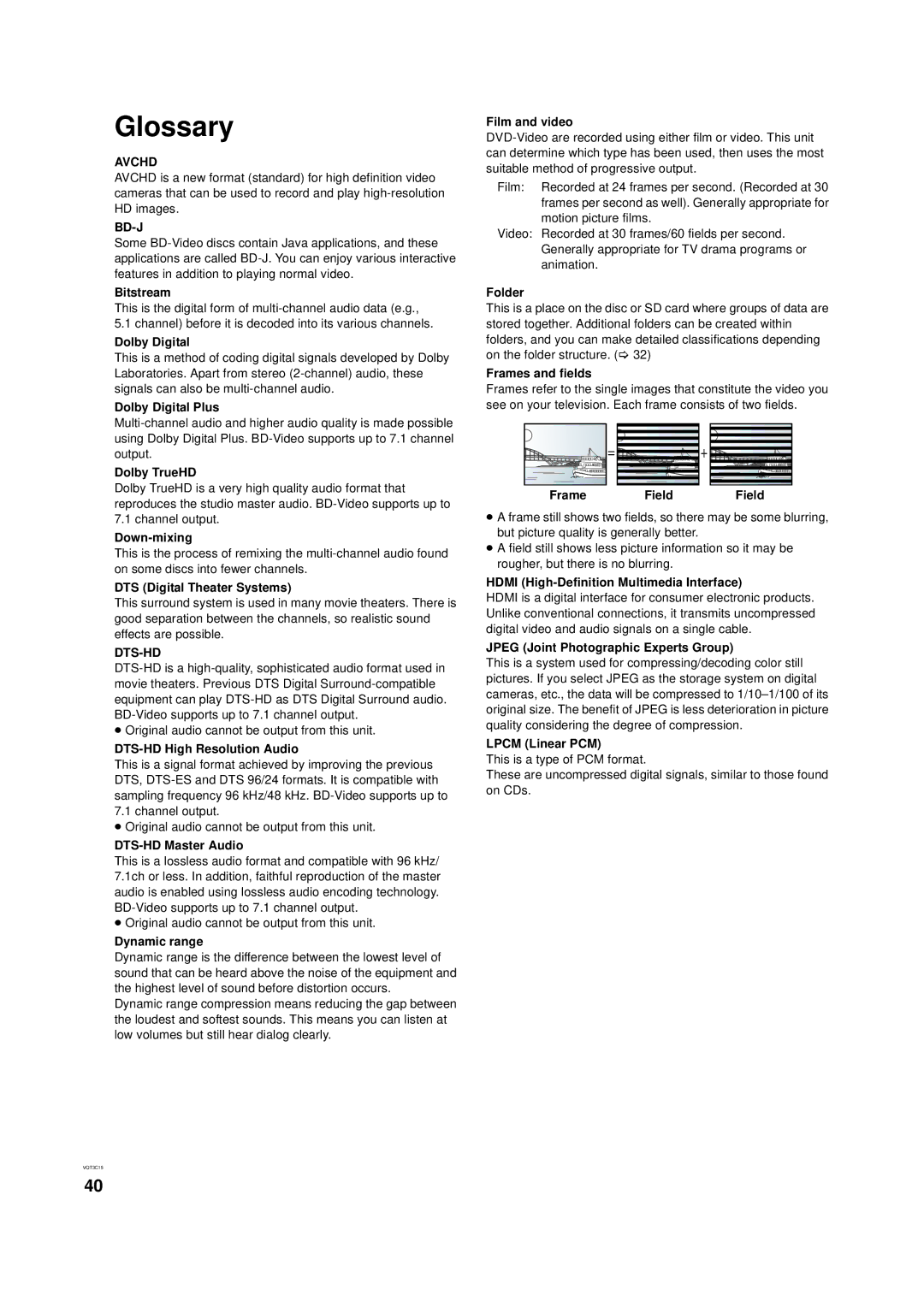
Glossary
AVCHD
AVCHD is a new format (standard) for high definition video cameras that can be used to record and play
BD-J
Some
Bitstream
This is the digital form of
Dolby Digital
This is a method of coding digital signals developed by Dolby Laboratories. Apart from stereo
Dolby Digital Plus
Dolby TrueHD
Dolby TrueHD is a very high quality audio format that reproduces the studio master audio.
Down-mixing
This is the process of remixing the
DTS (Digital Theater Systems)
This surround system is used in many movie theaters. There is good separation between the channels, so realistic sound effects are possible.
DTS-HD
≥Original audio cannot be output from this unit.
DTS-HD High Resolution Audio
This is a signal format achieved by improving the previous DTS,
≥Original audio cannot be output from this unit.
DTS-HD Master Audio
This is a lossless audio format and compatible with 96 kHz/ 7.1ch or less. In addition, faithful reproduction of the master audio is enabled using lossless audio encoding technology.
≥Original audio cannot be output from this unit.
Dynamic range
Dynamic range is the difference between the lowest level of sound that can be heard above the noise of the equipment and the highest level of sound before distortion occurs.
Dynamic range compression means reducing the gap between the loudest and softest sounds. This means you can listen at low volumes but still hear dialog clearly.
Film and video
Film: Recorded at 24 frames per second. (Recorded at 30 frames per second as well). Generally appropriate for motion picture films.
Video: Recorded at 30 frames/60 fields per second. Generally appropriate for TV drama programs or animation.
Folder
This is a place on the disc or SD card where groups of data are stored together. Additional folders can be created within folders, and you can make detailed classifications depending on the folder structure. (> 32)
Frames and fields
Frames refer to the single images that constitute the video you see on your television. Each frame consists of two fields.
| | r |
Frame | Field | Field |
≥A frame still shows two fields, so there may be some blurring, but picture quality is generally better.
≥A field still shows less picture information so it may be rougher, but there is no blurring.
HDMI (High-Definition Multimedia Interface)
HDMI is a digital interface for consumer electronic products. Unlike conventional connections, it transmits uncompressed digital video and audio signals on a single cable.
JPEG (Joint Photographic Experts Group)
This is a system used for compressing/decoding color still pictures. If you select JPEG as the storage system on digital cameras, etc., the data will be compressed to
LPCM (Linear PCM)
This is a type of PCM format.
These are uncompressed digital signals, similar to those found on CDs.
VQT3C15
40
